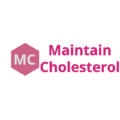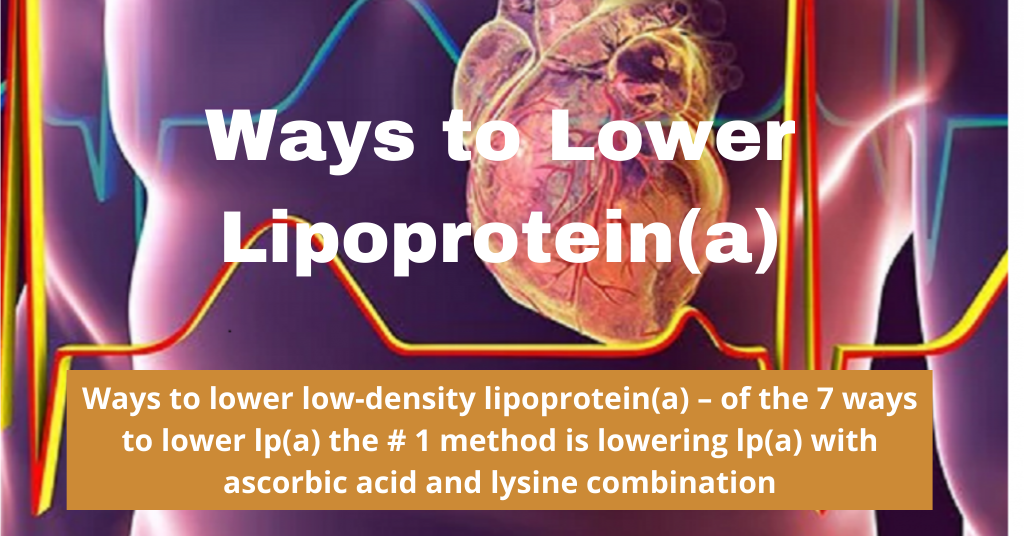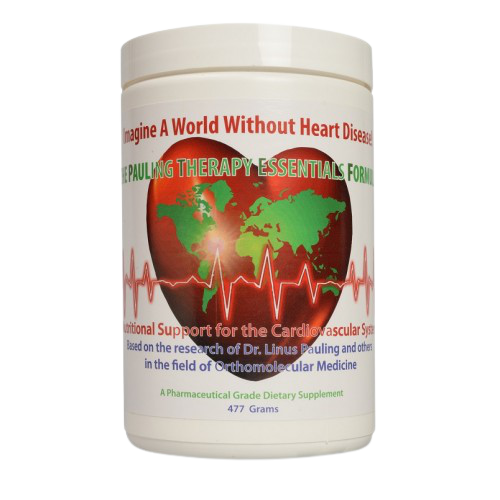Table of Contents
Ways to lower low-density lipoprotein(a) – of the 7 ways to lower lp(a) the # 1 method is lowering lp(a) with ascorbic acid and lysine combination
Introduction
Ways to lower cholesterol or ways to lower lipoprotein(a)! Let me remove the confusion first. You are reading it right. The things have changed now. The focus now has shifted from lowering low density lipoprotein ( LDL) cholesterol to lowering elevated levels of lipoprotein(a). Lp(a) is an abbreviation for lipoprotein(a) of lp(a) cholesterol.
What blocks the arteries? LDL or Lp(a)
All along you are told that the bad cholesterol LDL deposits in the arteries if its blood levels are high. High LDL levels is a risk factor for CVD.
You are also told that it is cholesterol rich saturated fats that raised your LDL levels. The opinion keeps on changing. Now saturated fats is bad for health and unsaturated fats is better. No consistency exists.
Now it has been accepted that it is not LDL but Lp(a) that is a risk factor for heart disease. Lp(a) is atherogenic as well as thrombogenic. Lp(a) is 300 times more atherogenic than ldl cholesterol. The cholesterol present in the arteries in the form of blockages consists mainly of lp(a) with little of LD and calcium deposits. Patients suffering from symptoms of heart disease have elevated levels of lipoprotein(a).
To be healthy you need to maintain cholesterol levels in normal range. Now you also need to keep your elevated lp(a) levels in normal range.
What is Lipoprotein(a)?
Structurally lp(a) is a molecule similar to ldl cholesterol with an additional protein called apolipoprotein(a) attached to it. Its levels in the body is genetically determined. Generally it is present in all of us in the blood to the extent of 0.1 to 3 to 5%. Only in a few percentage of the people its levels are high by birth.
faq
- Eating saturated fats and oils does not increase lipoprotein(a) levels;
- Statins do not lower lipoprotein(a). Therefore new replacement drugs are under development.
- Lipoprotein(a) is highly atherogenic and thrombogenic. It is 300 times more atherogenic than LDl.
- The increase in levels of lipoprotein(a) is entirely attributed to genetic factors. Know the truth here.
- In patients with coronary artery disease we have to lower lipoprotein(a) floating in the blood and also the lp(a) that is sticking on the walls of the arteries in the form of plaque.
- Almost 90% of the information you get in the literature will be about bringing down the levels of lipoprotein(a) in the blood stream.
Lipoprotein(a) and heart disease risk
According to the Framingham study:
- A lipoprotein(a) level of >30 mg/dL or >75 nmol/L (assay dependent) is an independent risk factor (RF) correlating to a two- to three-fold increased risk for CAD [1, 2].
- When associated with other lipid abnormalities, this risk increases 6–9 times normally [3].
- Further, patients with established CAD who have elevated Lp(a) levels are more likely to have acute coronary syndrome (ACS) and in those patients with ACS, baseline Lp(a) levels are predictive of sudden cardiac death [4, 5].
- Approximately 33% of the population have elevated levels of Lp(a) (>25 mg/dL), a condition that is an independent risk factor for coronary artery disease
- Therefor lowering lipoprotein(a) is more important in order to lower the risk of heart disease.
Now we will look at different ways to lower lipoprotein(a) on which work has already been done and published in the literature.
Approximately 33% of the population have elevated levels of Lp(a) (>25 mg/dL), a condition that is an independent risk factor for coronary artery disease
Ways To Lower Lipoprotein(a)
There are several ingredients known to lower lipoprotein(a). The first one to be known was niacin. Niacin has been in use since 1955 for various purposes like diabetes, depression and so on. Its beneficial effect on lipid profile is well known. It lower elevated LDL and triglyceride levels, increases HDL levels and also lowers lp(a) levels.
In earlier days crystalline niacin was used. It has several side effects. The main side effect is flushing because of which people discontinue the treatment. Now extended release tablets are available which do not cause flushing.
#1 High dose Niacin ER
Studies with CVD rsk patients:
Niacin extended release (ER) form has been successfully used to lower lipoprotein(a).
In one study conducted by N V Artemeva [ https://pubmed.ncbi.nlm.nih.gov/25936305/ ] ER niacin 500 mg tablet was used in the trial with 30 men. The study lasted for 24 weeks.
During the course of niacin treatment Lp(a) decreased by 28% (p < 0.003), Lp-PLA2 by 22% (p < 0.001), C-reactive protein by 24%
Studies with Diabetic Patients with High Lp(a) levels
It can also be used to lower lp(a) levels in diabetic patients. In diabetic patients niacin is given along with their regular diabetic drugs.
#2 Niacin ER with Omega-3 Supplements
Studies with Omega-3
In one study conducted by W.Herrmann, 12 gms of fish oil (8 gm omega-3) was given per day. Along with this was given 5,000 kilojoules of 30% fat diet (Mediterrian Diet) and moderate exercise. This trial lasted for 4 weeks and the results obtained are as follows:
- Total cholesterol fell by 12%;
- LDL cholesterol decreased by 16%;
- Apolipoprotein B levels decreased by 14.2%;
- Triglycerides decreased by 20.3%;
- HDL cholesterol increased by 8% and
- Plasma lp(a) levels reduced by 14%
Studies with Niacin ER and fish oil
In another separate study Alan F Helmbold used a combination of fish oil and niacin ER 500mg tablet for lowering lipoprotein(a).
The study was an observational study following subjects with an elevated Lp(a) (> 70 nmol/L) to assess impact of 12 weeks of combination Omega 3FA (600mg EPA+240mg DHA), niacin 500 mg (ER), and the Mediterranean diet on Lp(a).
Results were as follows:
The average Lp(a) reduction after 12 weeks of combination therapy was 23% +_ 17%
This shows that Mediterranian diet and omega-3 is useful in bringing lp(a) to lower levels. Foods rich in omega-3 is beneficial for people having high levels of lp(a).
#3: Ways to Lower Lipoprotein(a) -Tamoxifen
Studies in breast cancer patients have shown that tamoxifen decreases circulating levels of (Lp(a)), an independent risk factor for premature coronary heart disease, and insulin-like growth factor-I (IGF-I), a promising surrogate biomarker for breast cancer.
After 1 month, mean Lp(a) levels decreased by 23% with tamoxifen. No further change was observed after 2 and 6 months.
#4 Aspirin
In one study conducted by M. Akaiek 81 mg of aspirin was given to 37 Japanese patients (20 males and 17 females) with high serum Lp(a) concentrations (>300 mg/L).
Aspirin treatment significantly decreased serum Lp(a) in patients with high Lp(a), to 88.3% ± 2.7% of the baseline values after 1 month (P <0.01).
Serum Lp(a) concentrations in these patients remained low at 3 and 6 months after the start of treatment (85.0% ± 3.4% and 81.7% ± 2.6% of the baseline values, respectively; P <0.01).
In conclusion, aspirin lowers serum Lp(a) concentrations potentially through the reduction of apo(a) gene transcription in patients with high serum Lp(a).
#5 Estrogen and Progestin
This therapy is for post menopausal women
Hormone therapy with estrogen has been found to lower Lp(a) levels in women.
In one study a total of 2763 postmenopausal women younger than 80 years with coronary artery disease and an intact uterus participated. Mean age was 66.7 years.
Participants were randomly assigned to receive either conjugated equine estrogens, 0.625 mg, plus medroxyprogesterone acetate, 2.5 mg, in 1 tablet daily (n = 1380), or identical placebo (n = 1383).
Conclusion: Our data suggest that Lp(a) is an independent risk factor for recurrent CHD in postmenopausal women and that treatment with estrogen and progestin lowers Lp(a) levels.
Estrogen and progestin therapy appears to have a more favorable effect (relative to placebo) in women with high initial Lp(a) levels than in women with low levels. This apparent interaction needs confirmation in other trials.
#6: Best Ways to Lower Lipoprotein(a)– Ascorbic Acid and Lysine
Story of 53-year old postmenopausal women. How she switched from from a combination of HRT and Niacin Therapy. The treatment currently recommended for postmenopausal women with Lp(a) levels higher than 25 mg/dL consists of a combination of HRT and niacin.4
The adverse effects of niacin use are flushing, headache, and liver dysfunction.
After a thorough review of the literature, she began to follow the advice of Linus Pauling on a combination of Ascorbic acid and lysine.
For individuals who have an Lp(a) level higher than 25 mg/dL and a family history of heart disease, the recommendation is to take 3 g/d of both ascorbic acid and L-lysine monohydrochloride. After 6 months of this regimen, with no adverse effects, her Lp(a) level decreased to 14 mg/dL, a reduction of 48%.
The Lp(a) testing was done by the highly reliable Lawrence Berkeley National Laboratory/Berkeley HeartLab Department Technology Transfer program.
The theory is that lysine is an Lp(a)-binding inhibitor and thus blocks the Lp(a) attachment to the arterial blood vessel wall and that ascorbic acid helps to repair the collagen injury to the blood vessel and acts as an antioxidant. This is now an established method.
The best example of a supplement that contains vitamin c and lysine is the pauling therapy essentials formula. Apart from vitamin c and lysine it also contains 17 other ingredients that are helpful for optimal functioning of the heart. For detailed information see the the pauling therapy essentials formuala review here.
This method is the #1 method to make your lipid levels normal.
#7 L Carnitine
L-carnitine is an amino acid that is produced in the body. L-carnitine helps the body turn fat into energy. The body can convert L-carnitine to other amino acids called acetyl-L-carnitine and propionyl-L-carnitine.
Lp(a) lowering in non-diabetic patients
L-carnitine reduces plasma lipoprotein(a) levels in patients with hyper Lp(a).
In one study L-carnitine, was tested in a double blind study in 36 subjects with Lp(a) levels ranging between 40-80 mg/dL, in most with concomitant LDL cholesterol and triglyceride elevations.
L-carnitine (2 g/day) significantly reduced Lp(a) levels (-7.7% vs baseline and -11.7% vs placebo treatment), the reduction being more dramatic in the subjects with the more marked elevations
Lp(a) lowering in diabetic patients
In another study the effect of 1gm carnitine BID was studied on diabetic patients with and hypercholesterolemia.
In this preliminary study, after 3 and 6 months, l-carnitine significantly lowered the plasma Lp(a) level compared with placebo in selected hypercholesterolemic patients with newly diagnosed type 2 DM.
Summary – Ways To lower lipoprotein(a)
Lowering elevated lp(a) levels is a must to reduce the CVD risk.
Many ways to lower lipoprotein(a) are available. Most of them lower lp(a) levels in the blood stream. Of the 7 ways to lower lp(a) the # 1 method is lowering lp(a) with ascorbic acid and lysine combination.
Only one method i.e ascorbic acid lysine method reduces lp(a) present in blood stream as well as removes lp(a) attached to arteries. The arteries are also made healthy via collagen synthesis. This way the heart disease is reversed.Fthe



Pingback: This is How You Cut Down lp(a) cholesterol naturally
Pingback: Reduce Lipoprotein(a) with Niacin ER-